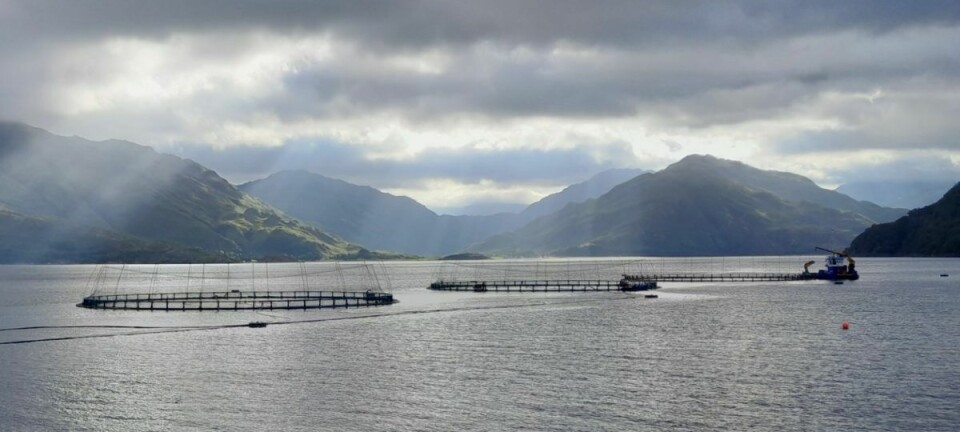
Mowi wins appeal to expand at Loch Hourn
Extra 250 tonnes of salmon not a threat to wild fish or pearl mussels, says Reporter
Mowi Scotland has won its planning appeal to increase capacity at its salmon farm in Loch Hourn by 10% to 2,750 tonnes.
Members of Highland Council’s Northern Planning Committee rejected the application by seven votes to six in June after a campaign led by The Friends of Loch Hourn, which describes itself as a community group made up of residents, regular visitors, landowners, fishermen and others that have a direct interest in the long-term future of the loch.
The group claimed fish farming in the loch was harming wild salmon by increasing sea lice numbers, and that residue from medicinal lice treatments also threatened native shellfish.
Objectors also questioned the validity of an environmental impact assessment (EIA) for the expansion, and the enforceability of an environmental management plan (EMP).
No damage
Mowi announced its decision to appeal in September, and permission to expand the farm has now been granted by Christopher Warren, a Reporter appointed by the Scottish Government.
“All told and in conclusion, I do not find the weight of available evidence supports a contention that the development would have, or be likely to have, a significant adverse effect on wild salmonids,” wrote Warren, who added that “there is nothing before me to suggest that there would be a likelihood that significant irreversible damage to wild salmonid populations would result from the development”.
Warren’s reasons for allowing the appeal included consideration of paragraph 253 of the Scottish Planning Policy (2014) which requires that: “The planning system should not duplicate other control regimes such as controlled activities regulation (CAR) licences from SEPA (Scottish Environment Protection Agency) or fish health, sea lice and containment regulation by Marine Scotland”.
“The CAR licence is the principal means by which biomass limits are set, as well as quantities of sea lice medicines which are permitted to be used,” wrote Warren.
Fluctuating catches
The Reporter also drew attention to past changes in wild fish catches.
“In representations, objections to the proposal are also largely focused on the impact that sea lice, originating from farmed fish, could have upon the wild salmonid population,” he wrote. “These objections have been framed in a broader context that there has been an ongoing decline in wild salmonid numbers, although this is not entirely apparent from Marine Scotland Science catch data in this area, which shows that catches have historically fluctuated quite significantly.”
Referring to the EIA, he wrote: “There have been criticisms of the EIA report in representations, which challenge its impartiality and validity. I am satisfied that the assessment provided by the EIA has been undertaken by suitably qualified experts.”
He continued: “Given the highly technical nature of some of the evidence being presented, I must place some degree of reliance on the responses of statutory consultees and their own expertise, in order to conclude whether the approach adopted by the EIA report, and its resultant findings, can be relied upon.
“In this regard, it is significant to note that no consultees have objected to the proposed development, nor have they raised any concerns or criticisms over the baseline, assessment or findings of the EIA report. I am satisfied that its findings can be relied upon on this basis.”
Robust condition
Warren said adherence to an agreed EMP was an essential condition of any consent and that that an EMP already used for other Mowi sites could form the basis of a robust condition for the Loch Hourn site.
Objectors also claimed that the expansion could be a threat to freshwater pearl mussels in a river in the loch’s catchment.
“For there to be a ‘likelihood’ of an adverse effect, there would need to be evidence that the development would be expected to materially reduce the number of wild juvenile migratory salmonids in Loch Hourn,” wrote Warren. “The evidence before me does not support the contention that this is a likely effect of the development.”























































